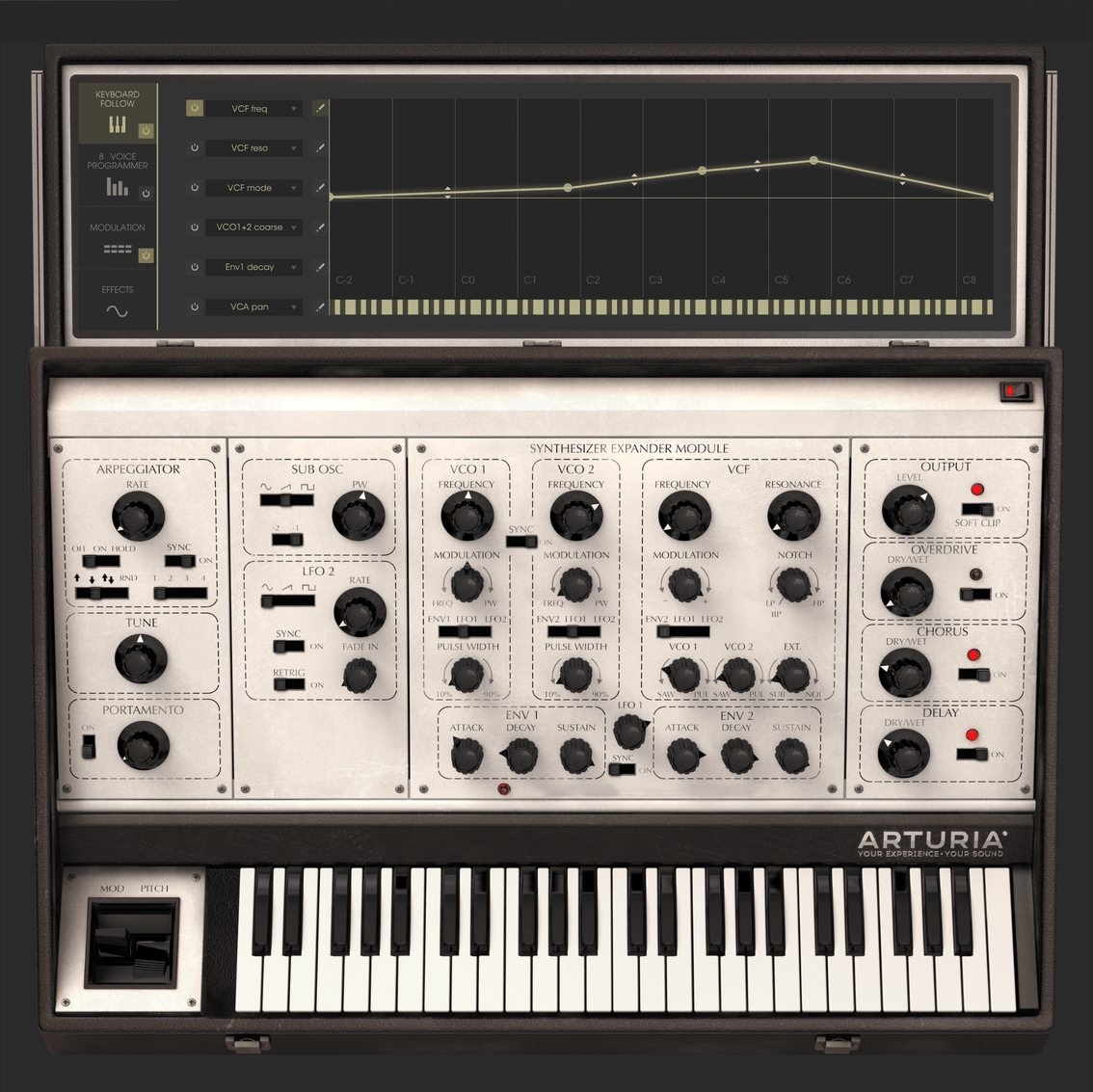Arturia Oberheim Sem V Mac Osx Download Youtube
четверг 03 января admin 4
'The Oberheim SEM V has a simplicity and elegance that was a feature of many. 'Analogue warmth and movement abound in the unique multimode filter found. The thought of having multiple instances of Oberheim's legendary SEM filter. In 2012, Arturia released the SEM V, an analog-modeled, virtual emulation of the classic. Plug-in; Platform: Mac, PC; Upgrade/Full: Full; Download/Boxed: Download. Or higher, 4GB RAM minimum; OS Requirements - Mac: OS X 10.10 or later.
More than a Resemblance A giant has come back to life. Oberheim's legendary SEM - Synthesizer Expander Module - is back for the first time as a high-end software emulation powered by Arturia's exclusive TAE® technology. The SEM module was originally made to compliment other synthesizers but later came into its own as a great sounding synth. The unique filter that allowed continuously variable operation from low pass to high pass gave it a sound that no other had. When multiple SEM's were connected into a 4 or 8 voice polyphonic system, it became a thing of beauty. Analog Masterpiece Revisited Accurately recreating the tone, waveshapes, multimode 12dB/octave filter and other detailed characteristics, SEM V delivers all the deep analog sounds that made its grand ancestor so unique and praised. Our voice programmer mode allows you to recreate the sound of the huge and rare 8 Voice.
Download irremote for nokia n95. Uber Mine of Sound The SEM is known as a bass and lead machine but our recreation extends it well beyond the original. It's sound pallet extends to moving 8 voice pads, acid arpeggios and even electronic percussion. Expanded Creativity While the SEM was a great synth, we wanted to make it even better. We added new innovations like the sub-oscillator for deep basses. A second LFO with more waveforms, and the modulation matrix greatly expands the sonic capabilities of the SEM. Add to this the arpeggiator and Key Follow modulator and you get one super powered synth.
Main Features • All the original parameters of the Oberheim SEM: two oscillators, each offering sawtooth wave and variable-width pulse wave with PWM, sine wave LFO, 12dB/oct multi-mode Filter with low-pass, high-pass, band-pass and notch, two ADS envelope generators. • Added functionalities: New LFO, Noise, Sub oscillator, on board effects (overdrive, chorus and delay), Arpeggiator, Portamento.
There can’t be many classic analogue synth re-creations left on Arturia’s ‘to-do’ list but the Oberheim SEM is an important addition to its already impressive line-up of virtual instruments. Developed in the mid-70s, the original was a studio staple for those lucky enough to be able to afford one, and enjoyed something of a renaissance in late 80s and early 90s electronica. Now, with hardware models extremely scarce, a virtual re-creation is the easiest and most cost-efficient way of getting those classic sounds.The SEM V is a modest download and comes in a multitude of formats. It’s 32- and 64-bit-compatible on the relevant versions of Mac OSX and Windows, and works in standalone or plug-in mode. You authorise the instrument via a dongle or by binding it to your machine, both of which require an internet connection. The synth itself is pretty straightforward, so won’t be too daunting to newcomers. Model Emulation Arturia’s TAE technology is excellent at modelling the characteristics of analogue circuits and components and, generally speaking, produces a gorgeous sound.
Happily, that’s the case here as well. Sound generation begins with two oscillators and the algorithms replicate the exact sawtooth and variable-width pulse waveforms present in the original. Oscillators can be coarse-tuned by left-clicking and dragging, and fine-tuned by right-clicking and dragging, replicating the dual-concentric knobs on the original. The oscillators can be hard-sync’ed to each other and each has a modulation control that can be assigned to LFOs 1 or 2 or Env1 parameters. Sound passes to a filter, and the 12dB/octave multi-mode filter is one of the things that gives the SEM its characteristic sound. It has four modes: low-pass, high-pass, notch and band-pass, as well as Modulation, Frequency and Resonance controls. Two ADS (Attack, Decay, Sustain) envelopes are faithfully modelled on the original and help you to create the kinds of sounds made popular by the original hardware.
